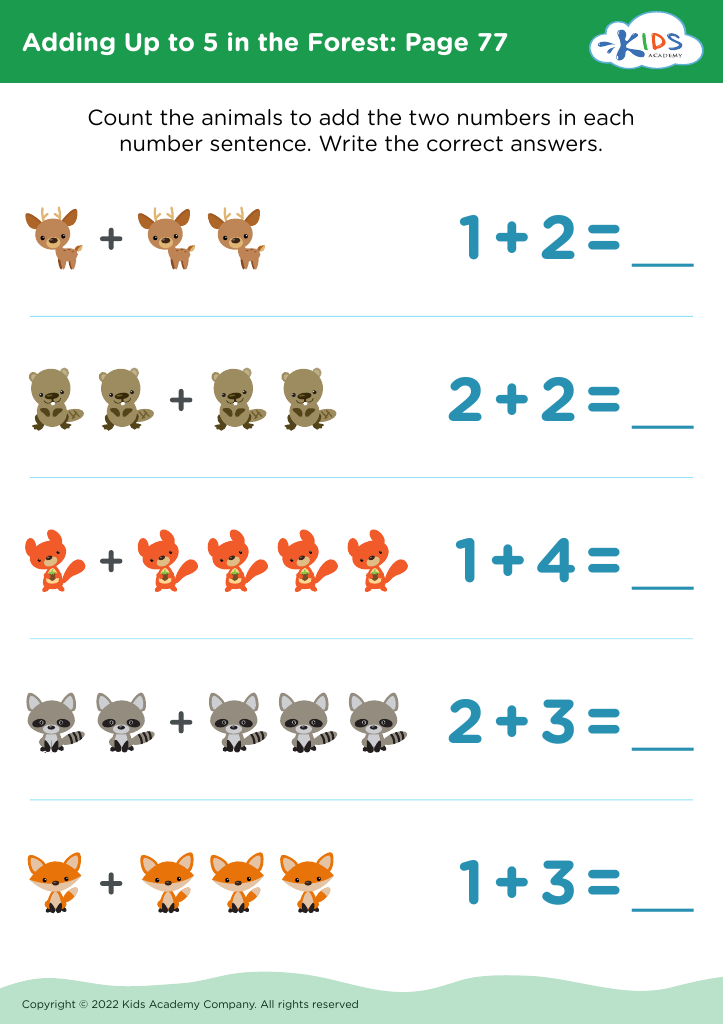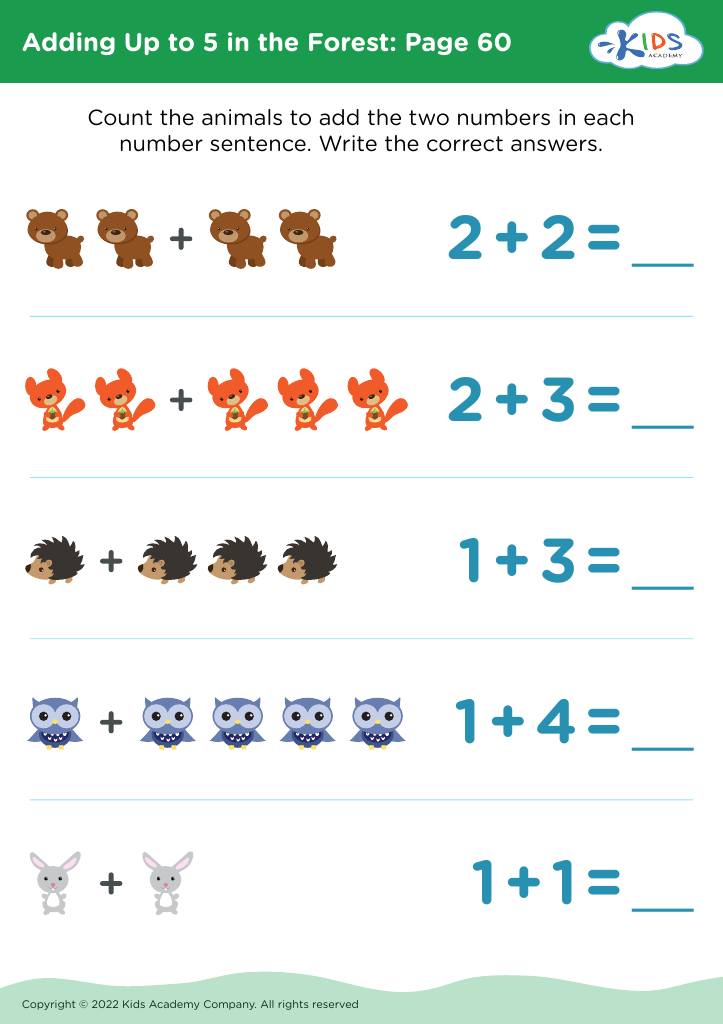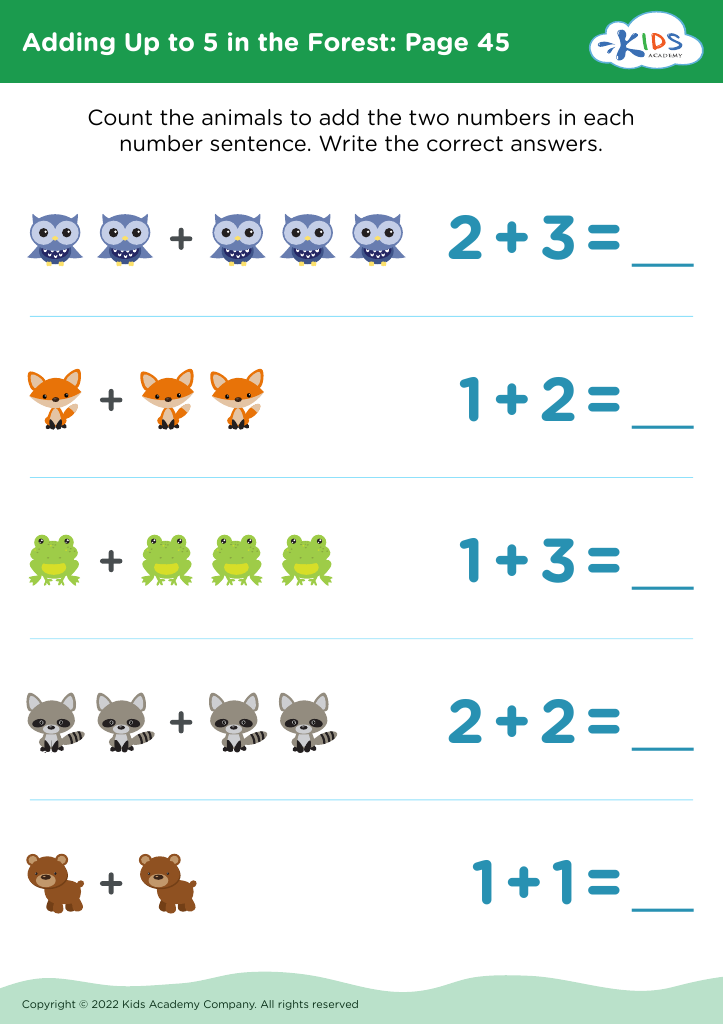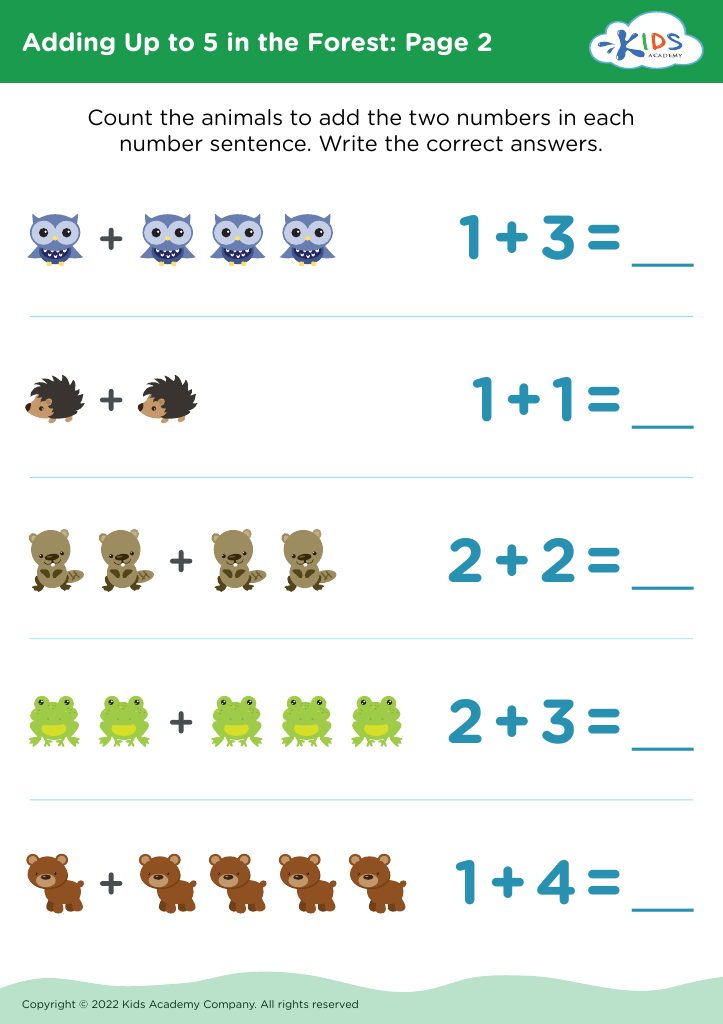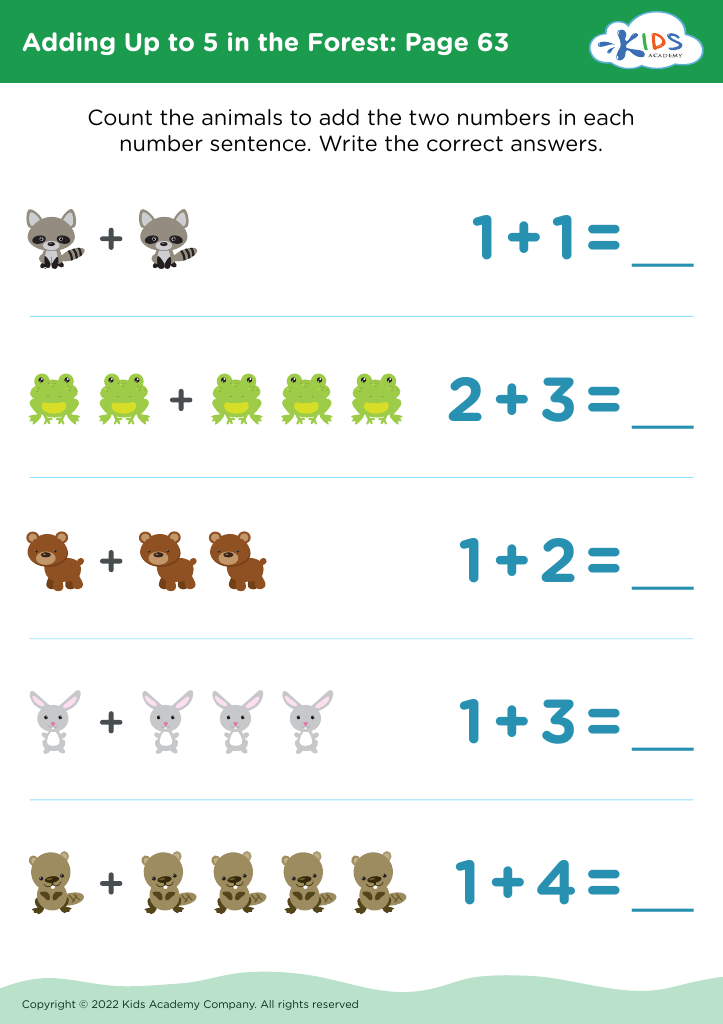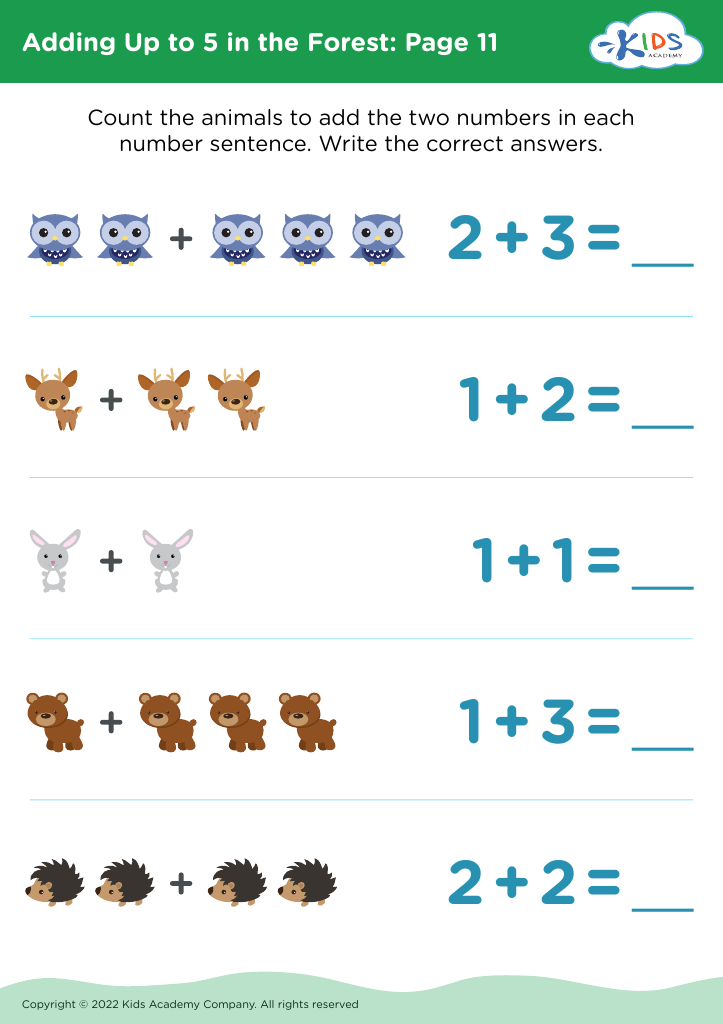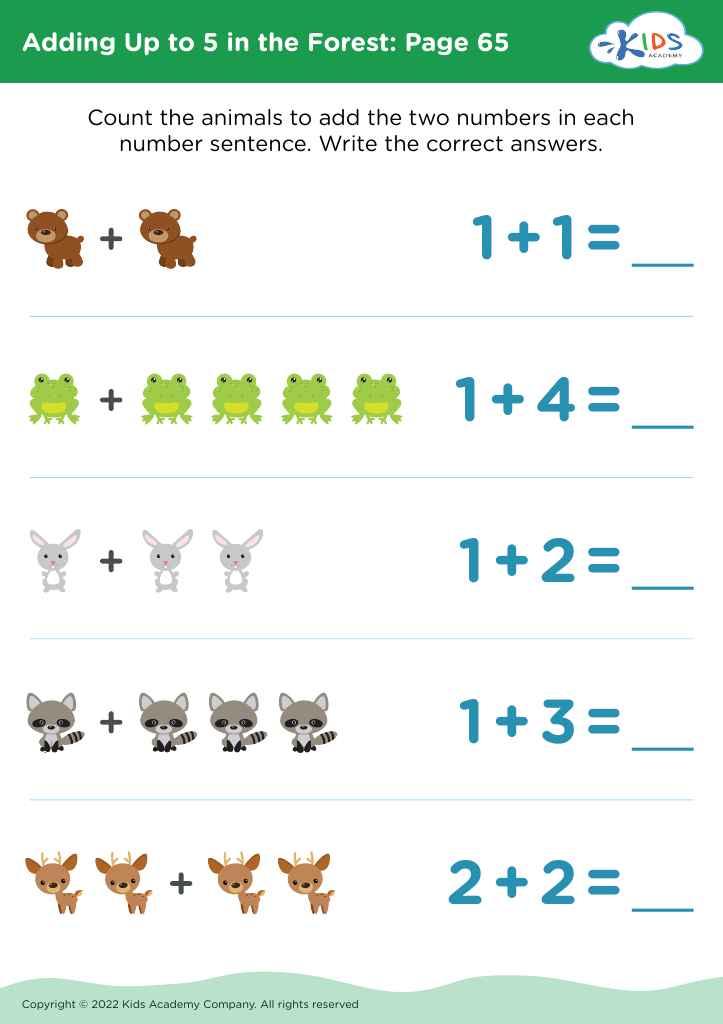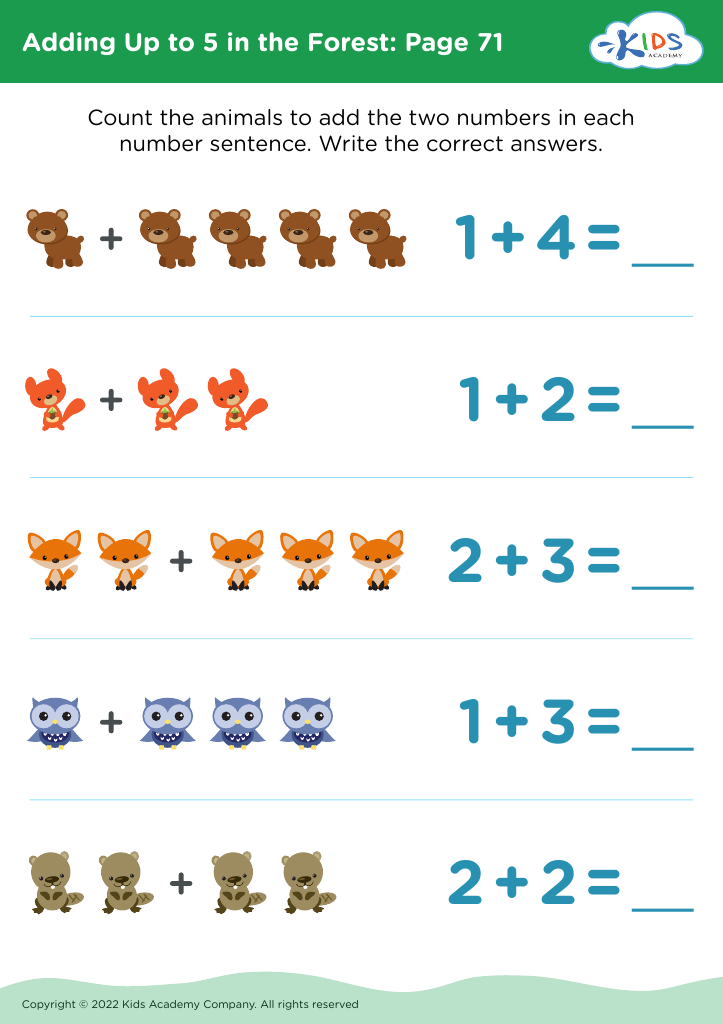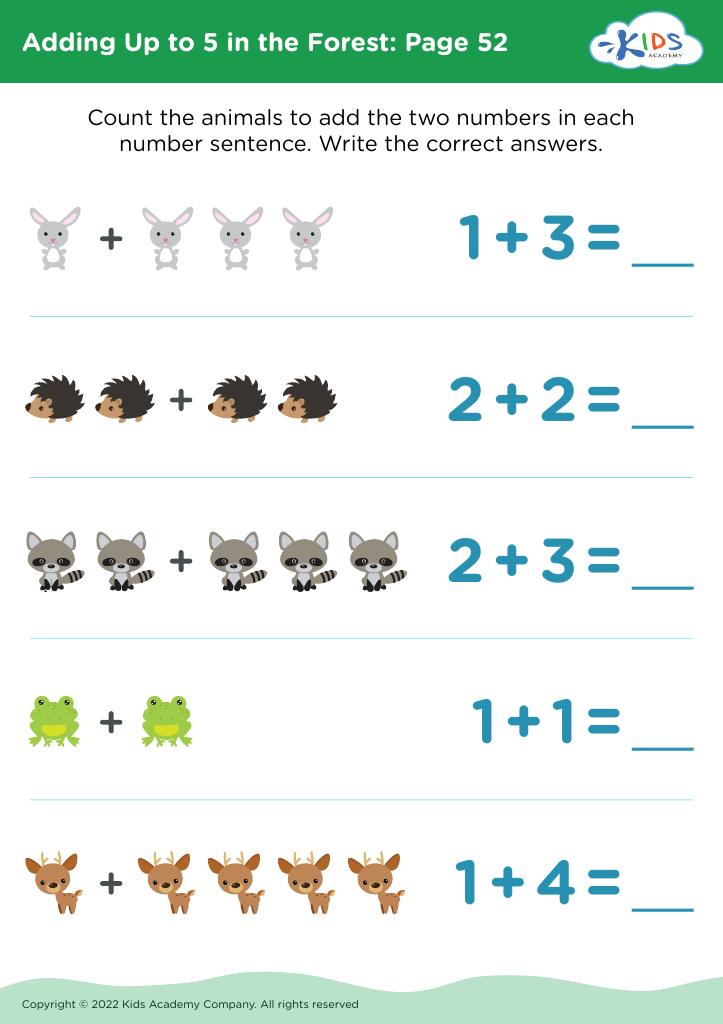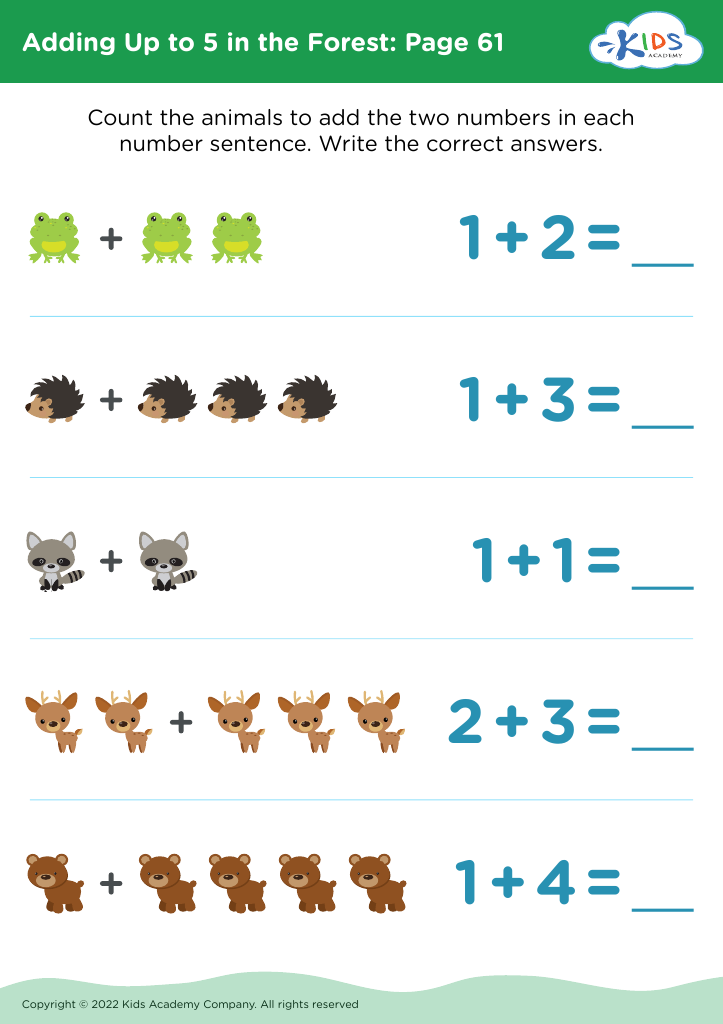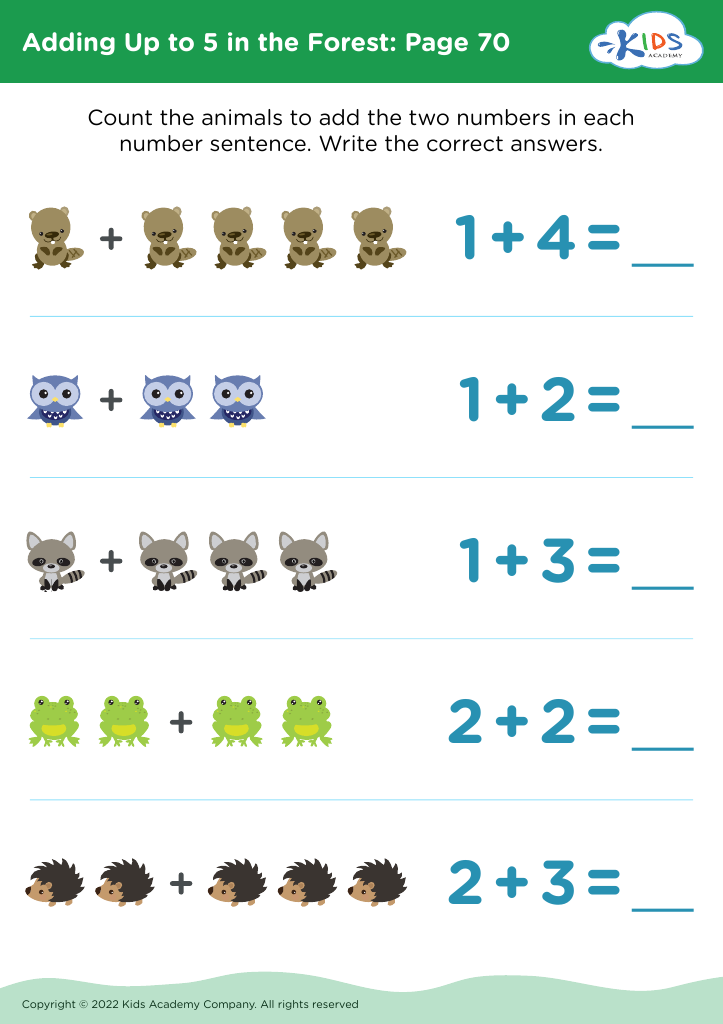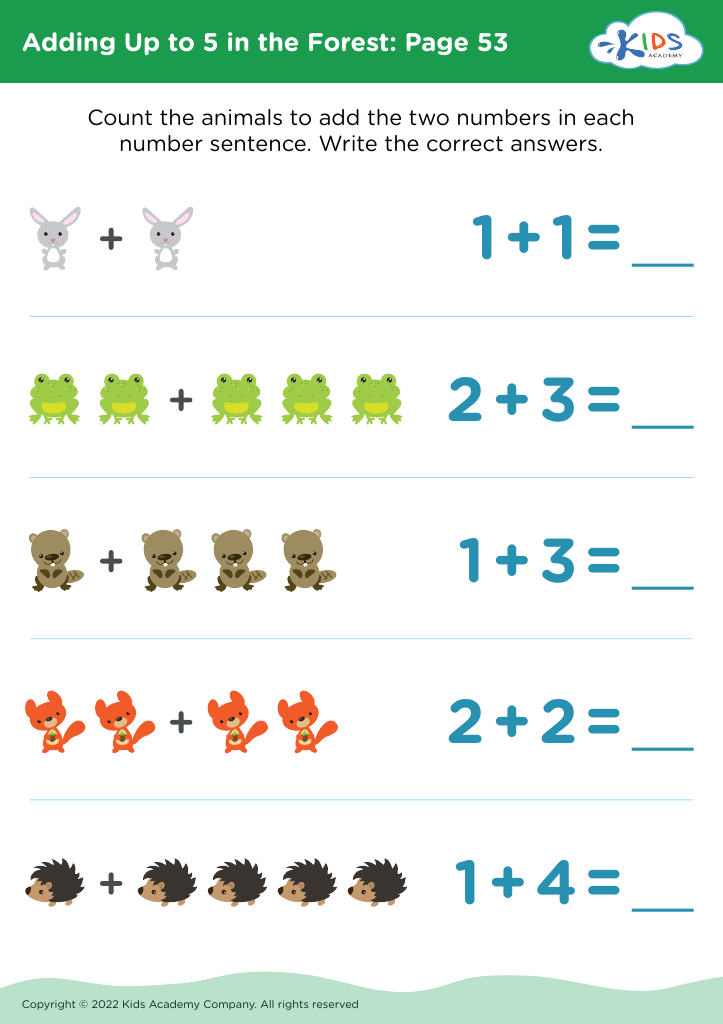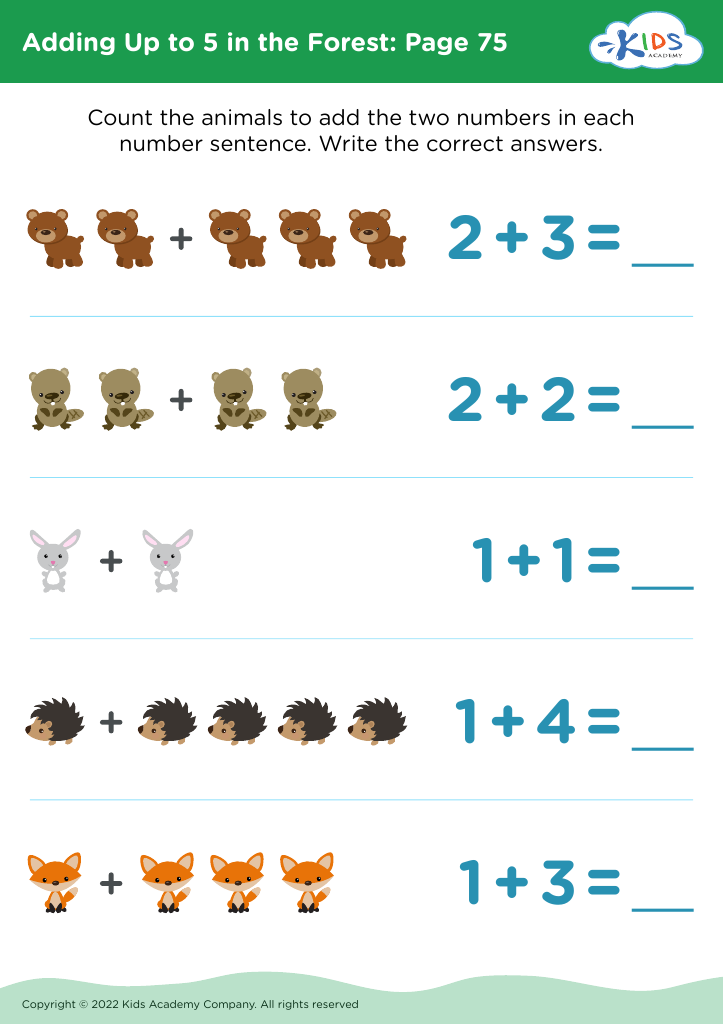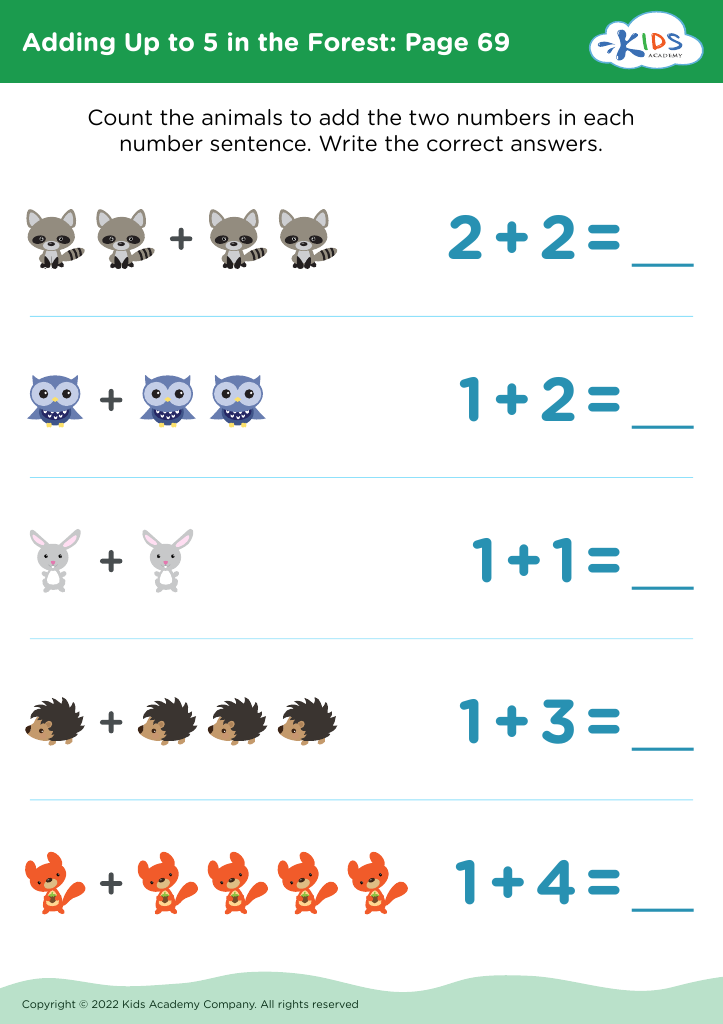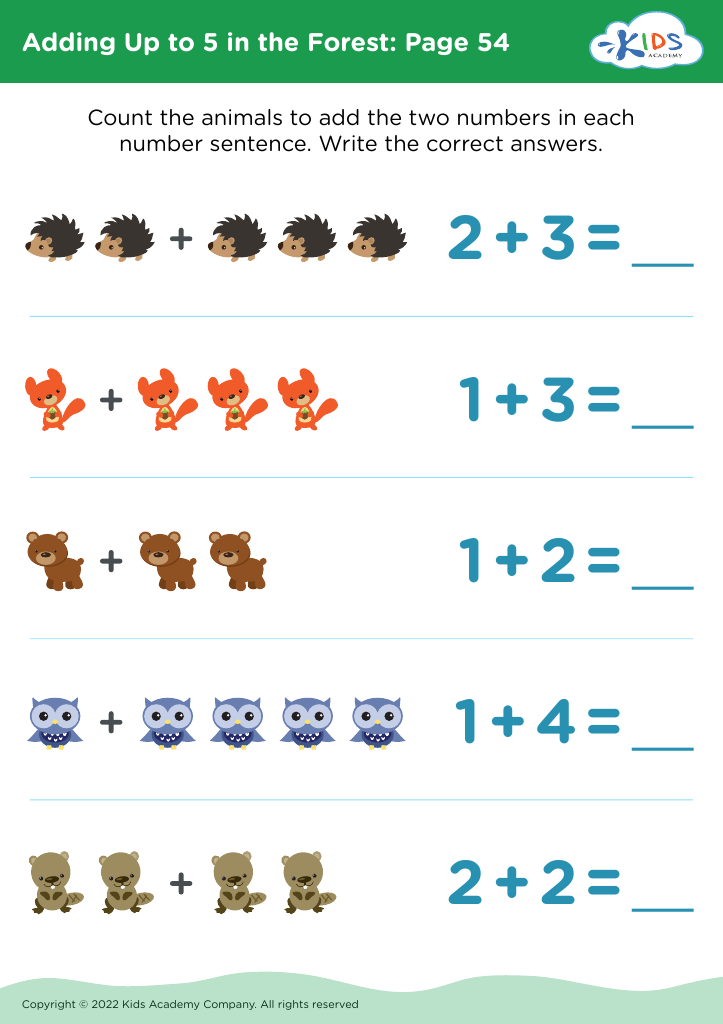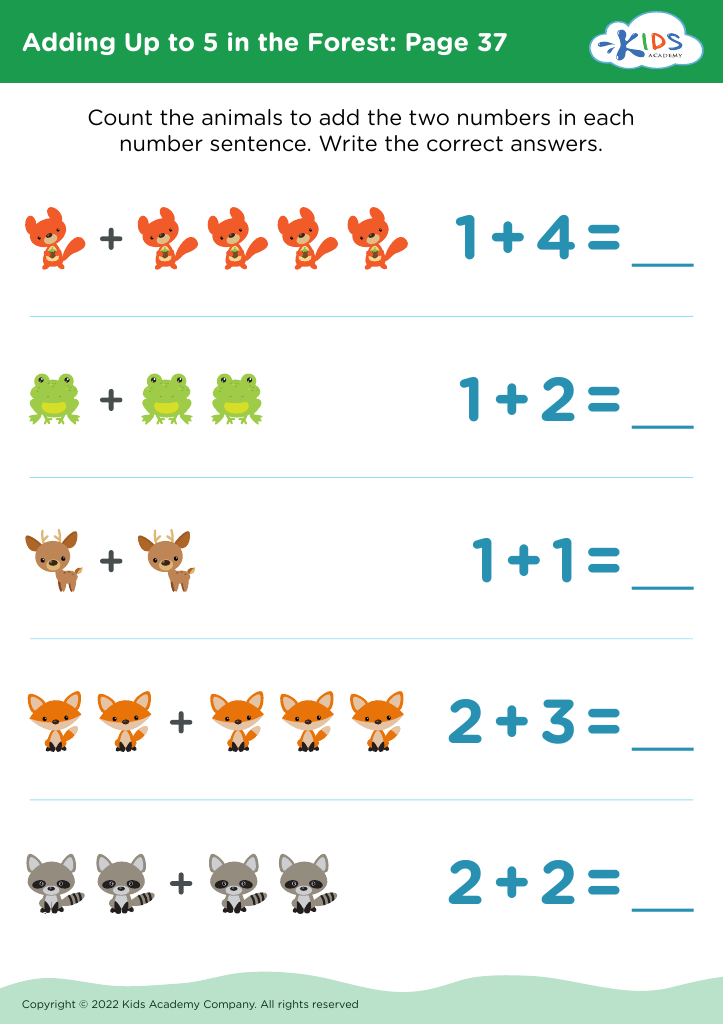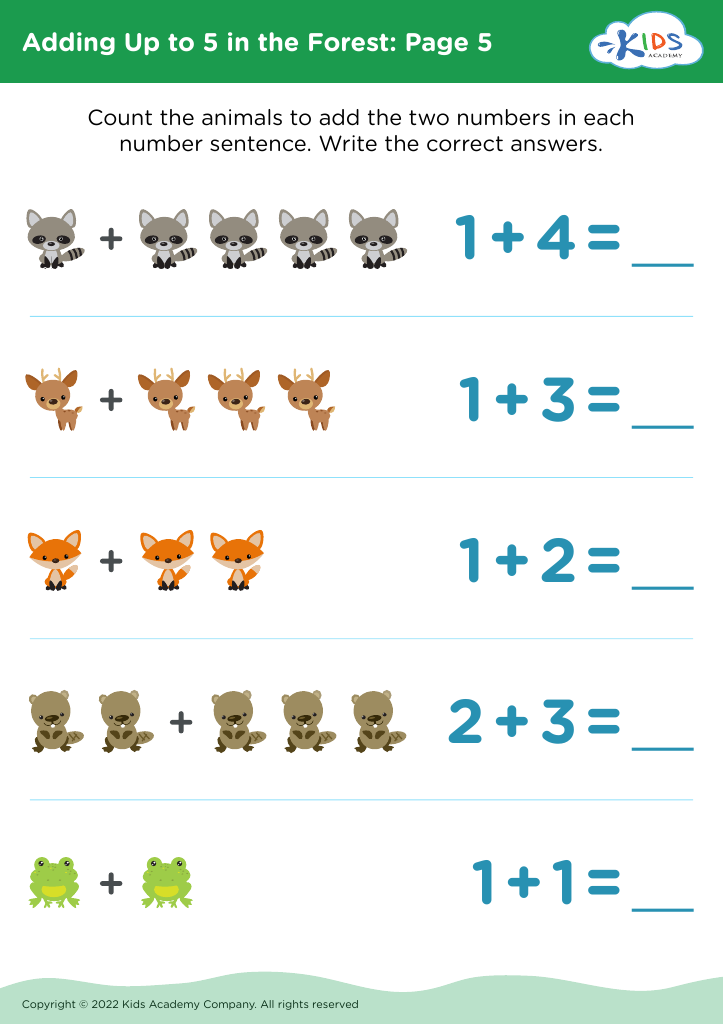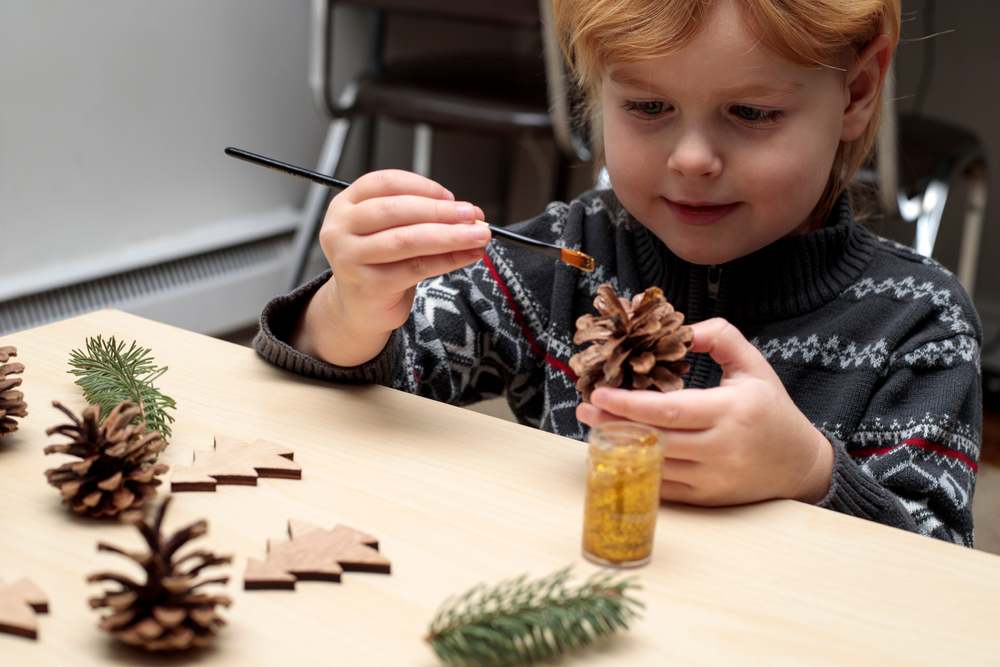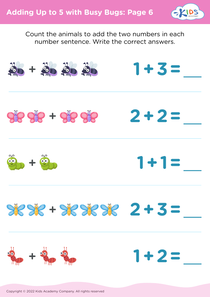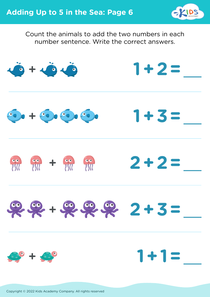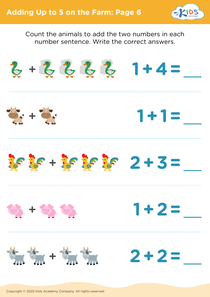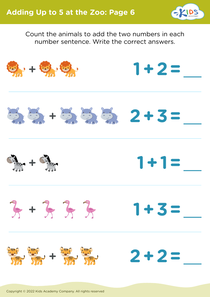Cognitive Development Adding in the Forest Worksheets for Ages 3-8
17 filtered results
-
From - To
Explore our "Cognitive Development Adding in the Forest Worksheets for Ages 3-8"! These interactive and engaging activities are designed to enhance young learners' cognitive skills through fun, forest-themed math problems. Perfectly crafted for children aged 3 to 8, our worksheets help develop critical thinking, problem-solving, and addition skills while capturing kids' imagination with enchanting forest scenes. Ideal for both classroom and home learning environments, these worksheets provide a perfect blend of education and entertainment, ensuring that developing minds stay intrigued and challenged as they build a solid math foundation. Boost your child's cognitive development naturally with these delightful resources!
Parents and teachers should highly value cognitive development for children aged 3-8 because this period is critical for building a strong foundation for further learning and life skills. Cognitive development during these formative years encompasses improvements in attention, memory, problem-solving, and language skills, which are essential for academic success and everyday function.
One engaging way to foster cognitive growth is through activities like "Adding in the Forest,” where children can learn mathematical concepts in a natural setting. This type of immersive and context-rich environment supports active learning and helps children make real-world connections. The use of tangible objects such as leaves, pine cones, and stones to count and add can be more effective than abstract numbers alone, enhancing understanding and retention.
Moreover, integrating learning with nature encourages curiosity and observational skills, promoting independent thinking and creativity. These activities not only teach math concepts but also reinforce environmental awareness and respect for nature. By prioritizing cognitive development through such engaging and hands-on methods, parents and teachers help children build critical thinking and problem-solving skills, setting them up for success in school and beyond. These foundational skills are not only academic but also foster holistic growth, including emotional and social development.

